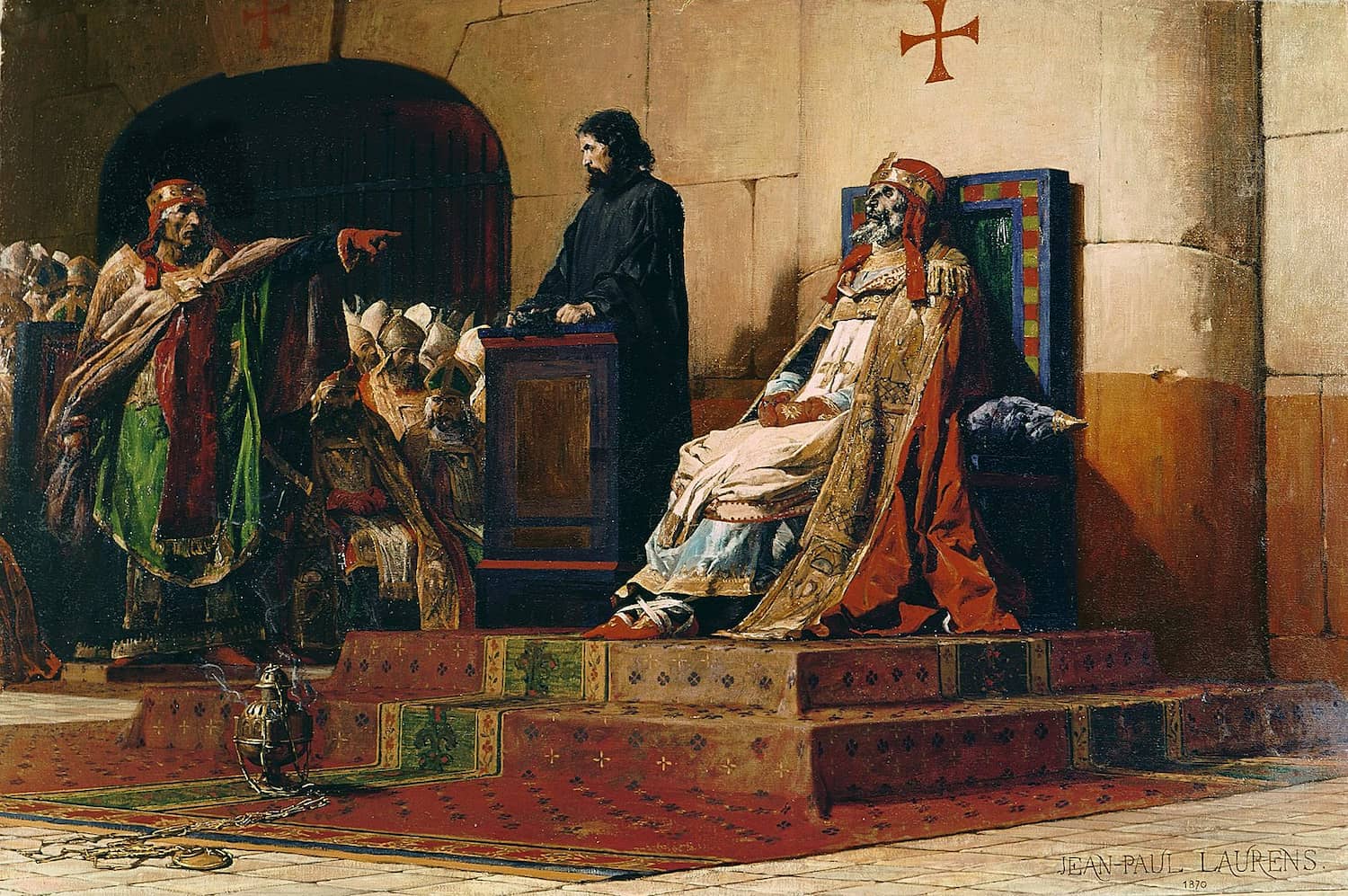Pope Formosus, born in 816, ascended to the papacy in 891 during a turbulent period in the history of the Holy See. His papacy was characterized by both internal and external challenges, including conflicts with other ecclesiastical figures and the political instability of the time.
In 897, a controversial synod was held in Anagni, Italy, in which Pope Formosus faced accusations of various canonical violations. The synod, often viewed as biased and influenced by political machinations, led to the posthumous condemnation of Formosus. His body was exhumed, dressed in papal vestments, and subjected to a symbolic trial.
The outcome of the Cadaver Synod was that Pope Formosus was found guilty of the charges against him. His papacy was declared invalid, and his acts as pope were annulled. His body was stripped of its papal vestments and thrown into the Tiber River.
Cadaver Synod: The Quarrel Between Spoletans and Formosians
After the death of Pope John VIII in 882, and even more so after the death of Emperor Charles III the Fat in 888, the Roman aristocracy sought to exert control over the papacy. With the division of the Holy Roman Empire, it often fell to the King of Italy to choose the successors to the throne of St. Peter. Consequently, despite his preference for Arnulf of Carinthia, the illegitimate son of Carloman of Bavaria, Pope Stephen V was compelled by the Italian aristocracy to crown Guy of Spoleto as King of Italy and later as Emperor.
Upon Guy’s death in 894, Pope Formosus, who had succeeded Stephen V, was forced to crown his son Lambert as Emperor, pledging his support. However, in 896, Arnulf, the King of Germany, responded to a summons from the Pope and invaded Italy. Formosus, in a bold move, crowned Arnulf as Emperor, breaking the papacy’s alliance with the Spoleto family, who were subsequently expelled from Rome. This act also liberated the papacy from the influence of the Roman aristocracy.
Nevertheless, with the death of Formosus in 896 and Arnulf’s departure in early 897, the Spoleto family returned to Rome, determined to seek revenge. They compelled Stephen VI, who had recently succeeded Boniface VI, Formosus’ short-lived successor, to order the exhumation of Formosus’ corpse for a posthumous trial before a synod of Roman bishops, starting in January 897.
The trial was presided over by Pope Stephen VI (also known as Stephen VII), who was a strong opponent of Pope Formosus. It is worth noting that Pope Stephen VI was later imprisoned and strangled.
How the Synod Unfolded
John IX set fire to the trial’s records, which have since vanished. As a result, it is impossible to know with certainty how the proceedings played out. Some aspects are based on real facts, while others are steeped in legend. While the occurrence of the event is not in question, a significant body of later literature favorable to Formosus has likely distorted the details. Only the roughly confirmed facts are presented here.
The desiccated corpse of the former Pope Formosus is exhumed, his burial shroud is replaced with papal vestments, and he is seated on his former papal throne to be judged by the council (in reality, a synod), primarily composed of Italian bishops. Formosus is accused of disregarding his excommunication while he held the position of Cardinal-Bishop of Porto and of breaking the oath he had sworn not to seek further ecclesiastical positions out of ambition.
The corpse is provided with a defense attorney, a deacon who answers questions on its behalf. Formosus is thus tried, convicted, and stripped of his papal insignia, with the fingers of his right hand, which had been used for blessings, being removed. His election as pope is declared invalid, and all his papal acts are nullified (Damnatio Memoriae). His corpse was given to the people of Rome, who cast it into the Tiber River.


